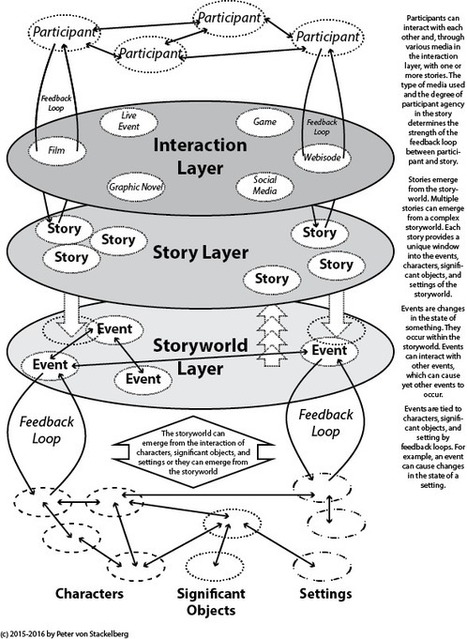 Your new post is loading...
 Your new post is loading...
How inclusive or exclusive should organizations be when developing their employees’ talents? In a world of unlimited resources, organizations would surely invest in everyone. After all, as Henry Ford is credited as saying, “the only thing worse than training your employees and having them leave is not training them and having them stay.” In the real world, however, limited budgets force organizations to be much more selective, which explains the growing interest in high potential (HiPo) identification. An employee’s potential sets the upper limits of his or her development range — the more potential they have, the quicker and cheaper it is to develop them. Scientific studies have long suggested that investing in the right people will maximize organizations’ returns. In line with Pareto’s principle, these studies show that across a wide range of tasks, industries, and organizations, a small proportion of the workforce tends to drive a large proportion of organizational results, such that:
Via The Learning Factor
Developing a more open and collaborative organizational culture is critical for managing the complexity of business
How many people do you know who seem to have an amazing job and workplace…but are still miserable every day? Their office is brand new—beautiful, tall-ceilinged, spick-and-span. They’ve got coffee and juices and gym memberships at their fingertips (at no cost, of course), and an on-site masseuse or childcare specialist. They may even have unlimited vacation time or work-from-home days. Yet, something is off. Even though the office is saturated with top-of-the-line perks, something is missing—a spark that could inspire them to truly love what they do. That missing spark, as you probably know, comes down to culture. Organizations with great cultures provide certain benefits that perks-saturated workplaces can’t deliver. These are the things that build the kind of workplaces that inspire loyalty, happiness, health, and greatness. And they’re not usually things that break the bank, either. Keep reading to discover the top traits, we’ve found, that make a great culture—along with examples from businesses that embody each one. Has your organization embraced them yet?
Via The Learning Factor
We’d failed. The executive who'd attended our kickoff presentation had rejected even our most basic premise. What he did manage to do, though, as we discovered after returning for a fresh meeting several weeks later, was recite a joke my colleague had told.
She didn't even remember telling it (it was about a consultant and a dog), but for whatever reason, it had stuck. That joke— which was immaterial, from our perspective, to the learning goals of the session—had somehow cracked our client’s brittle armor. Hearing him retell it eased us into an open conversation about his challenges leading the division. Ultimately, we emerged with a shared vision of what actually could help him.
Relaxing is key to learning. Learning is key to leadership. Laughter unlocks both.
Via David Hain
Companies can tap their natural advantage when they focus on changing a few important behaviors, enlist informal leaders, and harness the power of employees’ emotions.
Via Virtual Global Coaching
On the most basic level, change is a choice. Many leaders don’t see it that way. They declare employees must follow the system, as doing so is their job.
Via Fernanda Grimaldi
As organisations wake up to the fact that technology plays an important role in how they can remain competitive, they will be motivated to mak
In the 18th annual PwC survey of chief executive officers, conducted in 2014, many CEOs anticipated significant disruptions to their businesses during the next five years as a result of external worldwide trends. One such trend, cited by 61 percent of the respondents, was an increasing number of competitors. The same number of respondents foresaw changes in customer behavior creating disruption. Fifty percent said they expected changes in distribution channels. As CEOs look to stay ahead of these trends, they recognize the need to change the organization’s design. But for that redesign to be successful, a company must make its changes as effectively and painlessly as possible, in a way that aligns with its strategy, invigorates employees, builds distinctive new capabilities, and makes it easier to attract customers.
Via Kenneth Mikkelsen
In brief, short bursts, fear can be useful and powerful. Fear is distinguished from anxiety in that it indicates an immediate threat that can be responded to. In the shared past of the human species, the threat often took the form of a natural threat. The release of energy at the end of a brief encounter was a critical part of returning to healthy functioning. Now, unfortunately, the concept of leadership at many organizations has been clouded by perpetual fear. Fear arises throughout an organization when humane concerns are sacrificed to achieve short-term profit goals at the expense of team members and the future. Fear spreads unconsciously in response to an entirely profit-oriented environment and fear’s effects are usually not questioned by those who suffer from them. A fearful, ego-centric view of business supplants true leadership in favor of focus on “managing” people as if they were unruly and untrustworthy. Fear-based management abides in the belief that those in an organization “would never get anything done” unless they are continuously threatened. Rather than resolving a problem, this attitude creates one: Lack of trust leads to lack of productivity and lack of engagement caused by acute but unspoken consciousness of oppression. Relentless focus on individual gain in the form of money and promotion worsens this issue not just in America, but worldwide. This results in limitation of growth for our communities or organizations and invests all leadership within one personality. When the leader departs, the “machine” left behind disintegrates: As a limited “physical and mental” machine, it cannot generate integrity from its ego-based approach to external data. So long as it is believed that the enterprise can aspire to no benefit other than profit, there is no basis for evolution. Under such conditions, everyone associated with an organization is shackled by a self-interest viewpoint. The effects of this on the psychology of the group are obvious. The benefits of a Value Based Leadership One antidote to the fear basis has been values-based leadership. This is one important step away from the mechanical conception of enterprise and toward a concept that encompasses physical, emotional, mental, and spiritual dimensions. Instead of seeing work as a job, an evolution takes place wherein it can be understood as a career. The transformation from a fear basis to a values basis is a profound one. Leaders in such an enterprise focus on the long term and their goals naturally serve the community in which the enterprise is embedded. “Win-win” opportunities emerge more naturally than before because all of the different constituencies and communities impacted by a given enterprise have something to gain rather than being locked in a web of mutual exploitation for the gain of the few. A sense of social obligation creates a resilient basis for fulfillment among employees and customers while imbuing the entire community with shared understanding of its role in the ecological environment. Under the conditions of this awareness stage, the organization is empowered with its own identity separate from the leadership. It generates anabolic energy that motivates every member to undertake evolution in their values, beliefs and assumptions. The business is no longer chained to the tyranny of external data and is free to evolve on the basis of internal data and values. In an individual, we might call this self-knowledge. As the enterprise develops its own soul, leaders no longer focus on fear but on positive feedback, collaboration, and shared values. It focuses on transformation among individuals using an outsider perspective. Overall, there is a balance between “hard” and “soft” skills in the workplace environment just as there is in life. When all these elements are achieved, it then becomes possible for any enterprise to reach the final and highest stage. How Bringing More Love in Leadership Enables Individuals and Organizations to Reach their Full Potential Another way to approach any enterprise-level evolution is love-based leadership. In this final evolution, the enterprise supports society and continues to deepen its understanding of the matrix of needs and wants represented by customer and employee.Environmental and community stewardship is made a priority and there is an understanding of the continuum between the enterprise and what might appear to be “outside” of it, including the community at large. Work is now perceived as a mission: Because of this, it is possible to champion a higher level of energy and consciousness within the organization. There is no more basis for narrowing of perspectives, so it is understood that what is done within the enterprise can freely benefit the local area, the nation and the world at large. Profit becomes more easy to obtain in this final stage of transformation because there is a wider recognition of the organization and its ability to provide love experiences. Members of the community and of the enterprise come to recognize that there is no duality or conflict between profit, internal benefit and the greater good: In fact, the apparent conflict between these things is an illusion fostered by a fearful environment. At this elevated level of energy and consciousness, profit derives from the activities of individuals acting in a harmonious concert with one another. The enterprise becomes the heart of a values-centered mission for each person involved — and it provides a structure that anchors each person to the core values of love and trust. This allows each employee to reach fullest potential in the context of a specific approach to generating value for all of society. One can think of the arrangement of energy and consciousness displayed here as a “spiritual spiral” where the enterprise is at the core and the individuals within it are constantly growing, nourished and reaching out further and further toward the most distant elements of the environment that are impacted by their work. In this state, the energy of the physical, mental, emotional and spiritual poles of human identity will all be fully activated. Everyone can benefit from this transformation by continuing to displace individual egos and seeking ways to express and achieve love more highly in a service orientation. Likewise, the world as a whole can benefit as the principles of this consciousness transformation ripple through similar and interconnected enterprises, further reducing the burden of fear.
Via Belinda MJ.B
|
Defined hierarchy. Commanding leadership. These corporate ligaments secure firms in the face of threats and unify them against competition. Few beliefs are more widely held in business. The intuition, though, is wrong. “When you look at real organizations, having a clear hierarchy within your firm actually makes people turn on each other when they face an outside threat,” says Lindred Greer, a professor of organizational behavior at Stanford Graduate School of Business. Effective teamwork against threats requires not hierarchy, but egalitarianism; not centralized power, but a culture in which all voices count. Along with Lisanne van Bunderen of the University of Amsterdam and Daan Van Knippenberg of Drexel University, the research team teased out this finding through two complementary studies. In the first study, an experiment, teams of three students developed and pitched a consultancy project to a prospective client. Some of these teams were non-hierarchical, while members of other teams arbitrarily received titles: senior consultant, consultant, junior consultant. Likewise, some teams faced no rivals, while others were told they were competing with a rival firm for clients. The researchers found that the subset of hierarchical teams facing competition with rival firms struggled with infighting while the egalitarian teams cooperated on their work.
Via The Learning Factor
Organisations are seen to “learn” through their individual members – employees acquiring new information, or employees joining the organisation bringing with them new knowledge.
In the subway system in Stockholm you will find a set of stairs next to an escalator. As you can imagine most people take the escalator and not the stairs. Why not? Using the escalator will deliver you to the same location as using the stairs. It requires less energy. Everybody else is using the stairs.
One organization thought beyond those things. They recognized that if people used the stairs, it would be better for them. They could have posted signs telling people to use the stairs instead of the escalator. Or they could have put a poster up encouraging people to choose the stairs. We all know how effective signs and posters are at changing behavior.
Instead, they focused on changing the environment. They asked, “what could be done to make using the stairs more inviting that using the escalator?” The answer was to make the stairs more fun. The stairs are now piano keys and they play notes when pedestrians walk on them. The result is 66% more people than normal now choose to use the stairs instead of the escalator. That’s a pretty good change in behavior if you ask us. When encouraging behavior change in your team, don’t look for ways to “fix” them. Look instead for ways to make the environment support the desired behaviors.
Via David Hain
Most organizations in the world are finding it hard trying to instill virtuousness in all their departments. It is not as if they are not attempting to have it instilled in their everyday activities but somehow they just can’t seem to make it work. Such case is majorly for those who tend to know its values and what it can bring to the organization in the long run. However, such implementation has not being possible in any way. This is based on the fact that there are factors or variables that have been able to slow down the implementation processes. The major aim of this write up is to critically analyze these factors and then point out how they can be briefly deal with.
Via David Hain
Neuroscience research shows how new organizational practices can shift ingrained thinking.
Via Virtual Global Coaching
“ Understanding the relationships between various elements of a transmedia narrative can sometimes be obscured by the sheer number of elements — characters, significant objects, settings, events, the storyworld, one or more stories, and multiple forms of media. This model is based on some sketches I put together a while back and which I recently revisited. …”
Via blaucloud, massimo facchinetti, David Hain
This is the first in a series of four articles by Hilary Scarlett, speaker, consultant and author on Better Organisational Change through Neuroscience. They draw from her new book, Neuroscience for Organizational Change – an evidence-based, practical guide to managing change. The articles explore how the brain responds to organisational change and, equipped with a better understanding of our brains, set out what we can do to keep ourselves and others performing at their best.
How can an organization both exploit and explore? Managers, consultants, and academics around the world have long wrestled with this question. Some have responded by developing a concept known as “ambidexterity,” an organizational capability of fulfilling both managerial imperatives at once. But simultaneously managing today’s business while creating tomorrow’s goes beyond being ambidextrous. There is a third, even more intractable problem: letting go of what made you great.
Managers exploiting current businesses develop mindsets based on what they have experienced in the past. Such mindsets become further embedded in systems, structures, processes, and cultures that are self-perpetuating. It’s hard for managers, especially those who excel in the current system, to explore new unchartered terrain. And even harder for them to notice that many entrenched mindsets have lost relevance in changing circumstances that require exploring for new businesses. Bottom line: Before you can create, you must forget.
Via David Hain
It is worth putting extra thought and effort in building the culture that is more than just a poster on the wall. Here are 7 things to consider when building the culture of impact and creativity.
Via Kenneth Mikkelsen
|



 Your new post is loading...
Your new post is loading...



































Look for ability, social skills, and drive.